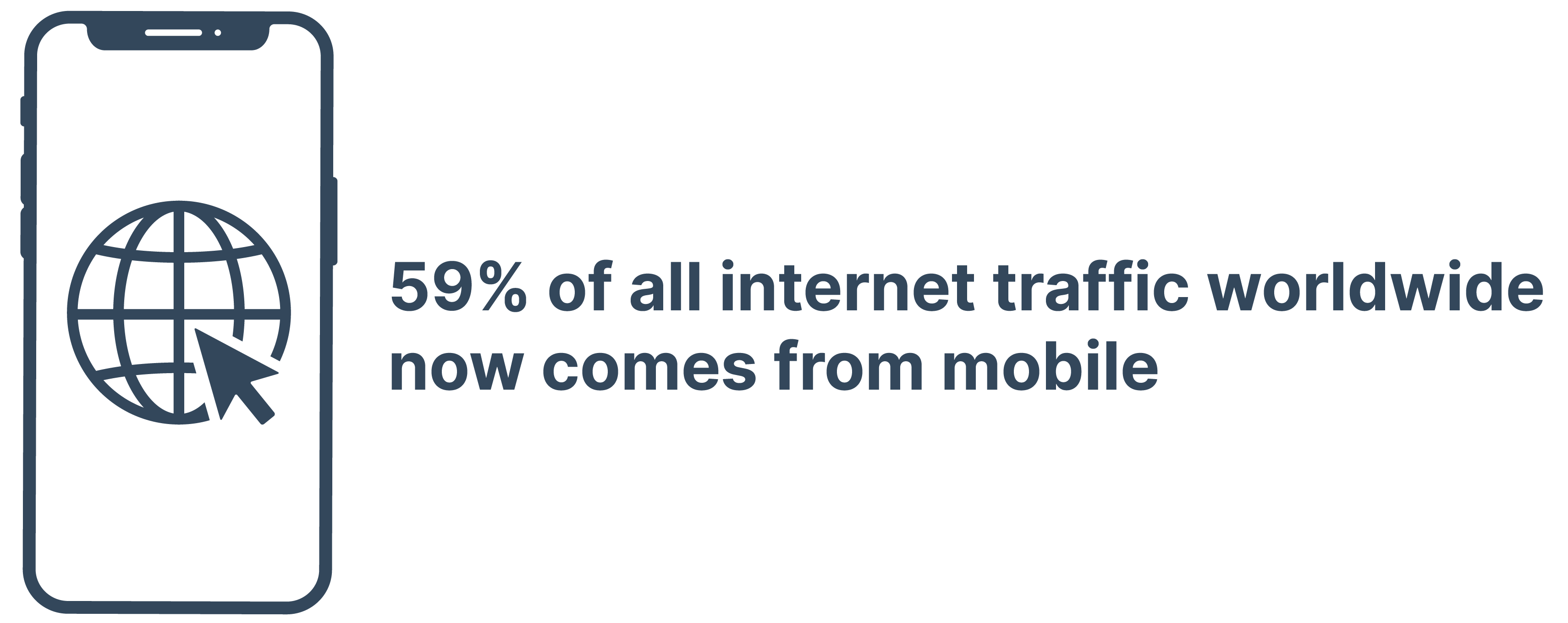How Marketers Are Using GA4 to Track Their Audience & the User Journey
Tracking the user journey is essential for marketers to gain insights into how users interact with their websites or apps. Google Analytics 4 (GA4) is designed to be more flexible and scalable than previous versions. With its advanced features and capabilities, it’s revolutionising how marketers analyse user behaviour, unlock valuable insights, and optimise their strategies.

Source: Emplifi
Marketers have the opportunity to better understand their audiences using some of the new advanced features in GA4. From enhanced audience segmentation to cross-device tracking and event-based analytics, GA4 equips marketers with the tools they need to thrive in an increasingly data-driven and customer-centric era.
Here are just a few ways GA4 can help marketers:
Enhanced funnel analysis
GA4 offers an enhanced funnel analysis report that allows marketers to visualise and analyse the steps users take towards a specific conversion goal. For example, how do users behave while purchasing a product which has a series of events like product view, product click, add to cart, checkout and then the final transaction?
Marketers can set up custom funnels to track specific user paths and identify where users drop off or convert. This helps identify bottlenecks or areas of concern such as abandoned carts, providing the opportunity to optimise the user journey. For example, running a remarketing campaign targeted at those who abandoned their carts.
User flow analysis
GA4's user flow report provides a visual representation of how users navigate through a website or app. Marketers can understand the most common paths users take, identify drop-off points, and discover unexpected user flows. The user flow analysis reports in GA4 include:
- User acquisition - How users entered your website or app, such as through organic search, paid ads, social media, or direct traffic
- Behaviour flow - Shows the path users take from one page to another, allowing you to understand the most common user journeys and drop-off points.
- Events flow - Shows the flow of users based on specific events they trigger, helping you analyse how users interact with different elements or actions on your site.
- Goal flow - Displays the flow of users as they move towards goals, highlighting conversion paths and identifying where users abandon the goal process.
- Segmentation - Use various dimensions such as demographics, devices, and traffic sources to understand how each segment navigates through your site.
Event-based tracking
GA4's event-based tracking model allows marketers to define and track specific user interactions and actions as events. Unlike traditional pageview-based tracking, which primarily tracks pageviews and URL changes, event-based tracking allows marketers to track and measure specific user actions or events, providing deeper insights into user behaviour.
Events can be anything from button clicks, log-ins, page scrolls, form submissions, video plays, downloads, purchases or any other action that signifies user engagement or progress towards your goals. By tracking such events, marketers can gain insights into how users engage with different elements on their websites or apps. This granular data helps understand user behaviour within the user journey and optimise specific actions.
Cross-device and cross-platform tracking
GA4 provides marketers with a more comprehensive data collection framework compared to its predecessor, Universal Analytics (UA). GA4's unified data model allows marketers to track user interactions across different devices and platforms. Whether users switch from a website to a mobile app or vice versa, GA4 can stitch together user sessions to provide a cohesive view of the user journey.
This helps marketers understand the continuity of user engagement as users switch across devices. For example, if a user starts exploring products on their mobile and later makes a purchase on their desktop, GA4 can attribute the entire user journey to that one single user.

Source: Statistica
Improved personalisation opportunities
By tracking the user journey across devices and platforms, marketers can gain a deeper understanding of user preferences and behaviours. This information can be leveraged to deliver personalised experiences and targeted messaging based on the user's interactions across different touch points.
It also allows for enhanced retargeting strategies whereby marketers can target users with relevant ads or messages based on their previous interactions, regardless of the device or platform they are using. All of which helps in delivering personalised and consistent marketing campaigns to re-engage users and drive conversions.

Source: EduMe
Machine learning capabilities
One of the most powerful features of GA4 is its integration with Google's machine learning capabilities. Marketers can leverage machine learning algorithms to gain deeper insights into user behaviour and predict user actions. GA4's machine learning models can automatically analyse patterns, identify anomalies, and generate insights that would be challenging to uncover otherwise.
Advanced audience insights
GA4 introduces advanced audience insights that enable marketers to create detailed user segments based on a combination of demographics, interests, and behaviours. Marketers can analyse the characteristics and behaviours of different audience segments, allowing them to tailor their marketing messages and strategies more effectively.
GA4 also provides insights into different stages of the user lifecycle, such as new users, returning users, and churned users. Marketers can track how users progress through these stages, analyse the actions taken by users at each stage, and identify opportunities for engagement or re-engagement. This helps in understanding the overall user journey and optimising strategies to nurture and retain users.
Alongside lifecycle and demographic segments, GA4 enables marketers to perform cohort analysis, which involves grouping users based on shared characteristics or behaviours over a specific period. By analysing user cohorts, marketers can track how different groups of users interact with their website or app, compare their behaviour, and identify trends or changes in user engagement over time. This helps in understanding how user behaviour evolves throughout the user journey
Additionally, GA4 integrates with Google Ads, enabling marketers to create remarketing audiences and deliver personalised advertising experiences.
Attribution modelling
Attribution modelling is a way to track the effectiveness of marketing campaigns. By using this, marketers can see which marketing channels are driving the most traffic to their websites and apps. This information can be used to improve future marketing campaigns and to get more value from marketing budgets.
Privacy-centric approach
With privacy becoming a growing concern, GA4 embraces a privacy-centric approach. It offers marketers the ability to analyse aggregated and anonymized data, reducing the risk of personally identifiable information being exposed. This ensures compliance with privacy regulations while still providing valuable insights to inform marketing strategies.
Custom reporting and analysis
With custom reports, marketers can dig deeper into the data and uncover insights that might not be readily available in standard reports. GA4 offers flexible reporting and analysis capabilities that allow marketers to create custom reports and explore data based on their specific needs. Marketers can define custom dimensions, metrics, and segments to explore user behaviour at different stages of the user journey. Custom reports in GA4 also offer flexibility in terms of report design, layout, and visualisations. Marketers can choose the dimensions, metrics, and visualisation options that best suit their reporting needs and preferences.
Here are some specific examples of how marketers are using GA4 to better understand their audiences and to track the user journey:
- A retailer is using GA4 to track the user journey from the first time a user visits their website to the time they make a purchase. The data is used to identify which marketing channels are driving the most traffic to their website and which pages are most likely to lead to a purchase.
- A B2B company is using GA4 to track the user journey from the first time a user visits their website to the time they sign up for a demo. The data is used to identify which marketing channels are driving the most traffic to their website and which pages are most likely to lead to a demo request.
- A non-profit organisation is using GA4 to track the user journey from the first time a user visits their website to the time they make a donation. The organisation is using this data to identify which marketing channels are driving the most traffic to their website and which pages are most likely to lead to a donation.
These are just a few examples of how marketers are using GA4 to better understand their audiences and to track the user journey. As the marketing landscape becomes increasingly competitive and customer expectations continue to rise, it’s vital that marketers use the tools available to them to better understand their audiences, drive engagement, and foster long-term customer relationships.
Share this
You May Also Like
These Related Stories

[Guide] Small Marketing Teams: Reclaim Your Time & Build Better Customer Relationships

Beginner's Guide to Creating a Profitable Email List


